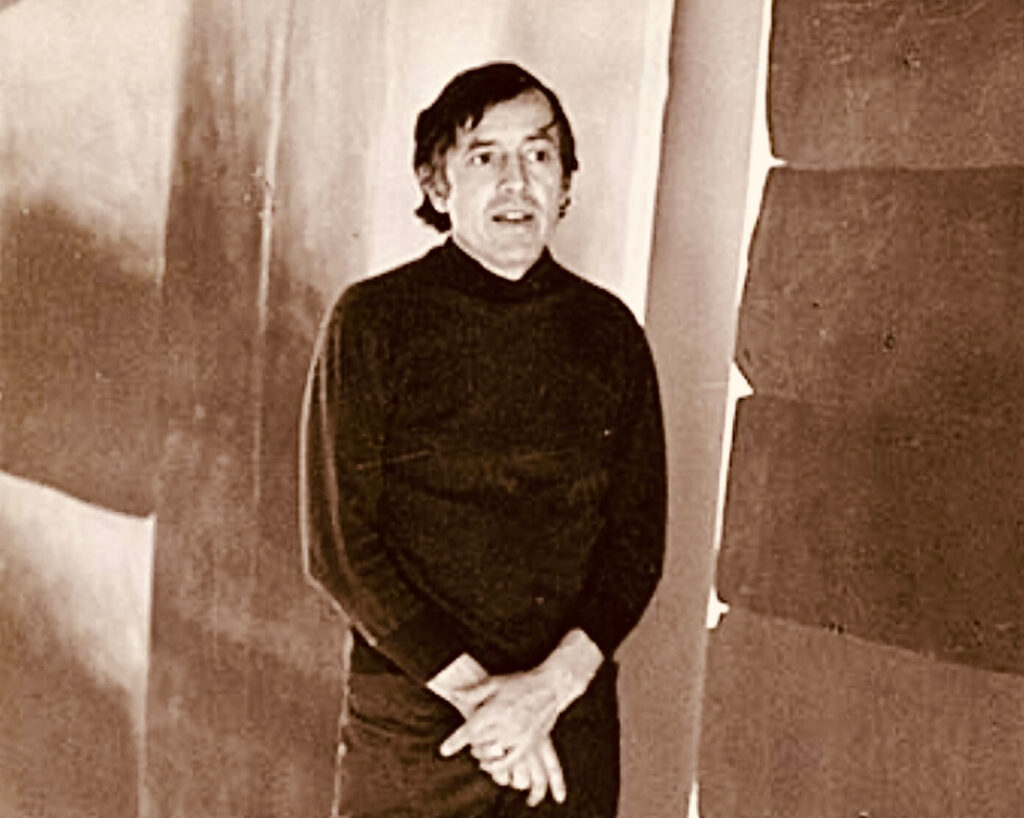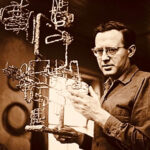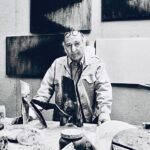Friedel Dzubas
Friedel Dzubas (1915-1994) was a pivotal figure in the evolution of American abstract art. Born in Germany and later making his mark in the United States, Dzubas became known for his dynamic use of color and form, contributing significantly to the Abstract Expressionist movement and the Color Field painting that followed. This biography explores Dzubas’s life, artistic development, and two of his most important artworks, highlighting his enduring influence on modern art.

Early Life and Education
Friedel Dzubas was born on April 20, 1915, in Berlin, Germany. Growing up in a culturally rich environment, Dzubas developed an early interest in art. He studied at the Prussian Academy of Arts in Berlin, where he was influenced by the burgeoning modernist movements of the time. However, the rise of the Nazi regime in Germany profoundly affected his life and career. As the political situation in Germany deteriorated, Dzubas, who was of Jewish descent, fled to the United States in 1939 to escape persecution.
Early Career in America
Upon arriving in New York City, Dzubas immersed himself in the vibrant art scene. He found himself among a group of artists who would become key figures in the Abstract Expressionist movement. During the 1940s, Dzubas worked alongside artists like Jackson Pollock, Willem de Kooning, and Hans Hofmann. The influence of these artists, particularly Hofmann’s emphasis on the dynamic use of color and spatial relationships, would be evident in Dzubas’s later work.
In the early years of his career in America, Dzubas worked various jobs to support himself while continuing to develop his artistic practice. His early works from this period show a blend of European modernism and emerging American abstraction, characterized by bold brushwork and an exploration of color and form.
Emergence as a Leading Abstract Expressionist
By the 1950s, Dzubas had begun to establish himself as a significant voice in the Abstract Expressionist movement. His work during this period was marked by a shift towards larger canvases and a more confident use of color and gestural brushwork. He was particularly interested in the emotional and expressive potential of color, using it to create dynamic compositions that conveyed movement and energy.
One of the defining characteristics of Dzubas’s work was his use of “color fields” – large areas of flat, unmodulated color that interact with one another to create a sense of depth and movement. This approach aligned him with the Color Field painters, a group that included artists like Mark Rothko and Helen Frankenthaler. However, Dzubas’s work retained a distinct gestural quality that set it apart from the more meditative, serene compositions of his contemporaries.
Important Artworks
“Blue Bar” (1976)
“Blue Bar” is one of Friedel Dzubas’s most celebrated works, exemplifying his mature style and his innovative use of color and form. The painting features a large, horizontal expanse of blue that dominates the canvas, intersected by a series of irregular, vibrant color fields in shades of orange, red, and yellow. The composition is both dynamic and harmonious, with the bold blue bar creating a sense of stability while the surrounding colors add movement and energy.
The use of color in “Blue Bar” reflects Dzubas’s interest in the emotional and expressive potential of color. The blue bar, with its deep, resonant hue, evokes a sense of calm and contemplation, while the vibrant surrounding colors create a sense of vibrancy and excitement. The interaction between these elements creates a dynamic tension that is characteristic of Dzubas’s work.
“Blue Bar” demonstrates Dzubas’s skill in creating compositions that are both visually striking and emotionally resonant. The painting’s bold use of color and its balanced composition reflect the artist’s mastery of his medium and his ability to convey complex ideas and emotions through abstract forms.
“Red Shift” (1981)
Another important work in Dzubas’s oeuvre is “Red Shift,” created in 1981. This painting exemplifies his later style, characterized by a more refined approach to color and form. “Red Shift” features a series of overlapping color fields in shades of red, orange, and pink, creating a sense of depth and movement across the canvas. The composition is dynamic and fluid, with the colors blending and interacting in a way that suggests motion and change.
The title “Red Shift” references the astronomical phenomenon where light from an object moving away from the observer shifts towards the red end of the spectrum. This concept of movement and change is reflected in the painting’s composition, with the overlapping color fields creating a sense of continuous transformation. The use of red, a color often associated with intensity and emotion, adds to the painting’s dynamic quality.
“Red Shift” highlights Dzubas’s ability to convey complex ideas through abstract forms and color. The painting’s refined composition and its exploration of movement and change reflect the artist’s ongoing interest in the expressive potential of color and form. It is a testament to Dzubas’s skill and innovation as an artist, demonstrating his ability to create works that are both intellectually engaging and visually stunning.
Later Career and Influence
In the later years of his career, Dzubas continued to refine his approach to color and form, producing a series of large-scale paintings that further explored the themes of movement and transformation. His work during this period was marked by a greater emphasis on color harmony and spatial relationships, creating compositions that were both dynamic and balanced.
Dzubas’s contributions to modern art were recognized with numerous exhibitions and awards. He held teaching positions at several prestigious institutions, including the School of the Museum of Fine Arts in Boston and the Parsons School of Design in New York. His influence extended to a new generation of artists, many of whom were inspired by his innovative use of color and form.
Personal Life and Philosophy
Friedel Dzubas’s personal life was marked by his dedication to his art and his relationships with fellow artists. He was known for his intellectual rigor and his deep commitment to exploring the possibilities of abstract painting. Dzubas viewed his work as a means of engaging with the world and conveying his inner vision, using color and form to express complex ideas and emotions.
Dzubas’s philosophy of art emphasized the importance of balance and harmony, seeking to create compositions that were both visually striking and emotionally resonant. He believed in the power of abstraction to evoke a wide range of responses, and his work often reflects a deep sense of curiosity and wonder about the human experience.
Legacy and Recognition
Friedel Dzubas’s legacy as an artist lies in his ability to create a unique visual language that combines emotion, movement, and color. His innovative use of gestural abstraction and his dynamic compositions have left a lasting impact on the field of modern art, influencing generations of artists and viewers.
Dzubas’s works are included in the collections of major museums and galleries around the world, including the Museum of Modern Art in New York, the Whitney Museum of American Art, and the Hirshhorn Museum and Sculpture Garden. His influence extends beyond his own paintings, as he also played a crucial role in advocating for the recognition and inclusion of abstract artists within the art world.
Conclusion
Friedel Dzubas’s artistic journey is a testament to his creativity, resilience, and profound understanding of color and form. Through his innovative use of gestural abstraction and his dynamic compositions, he created a body of work that continues to inspire and challenge viewers. “Blue Bar” and “Red Shift” are just two examples of his ability to convey complex ideas and emotions through abstract forms and vibrant colors. Dzubas’s legacy as a master of abstract expressionism and color field painting ensures that his work will continue to resonate with audiences for years to come.



